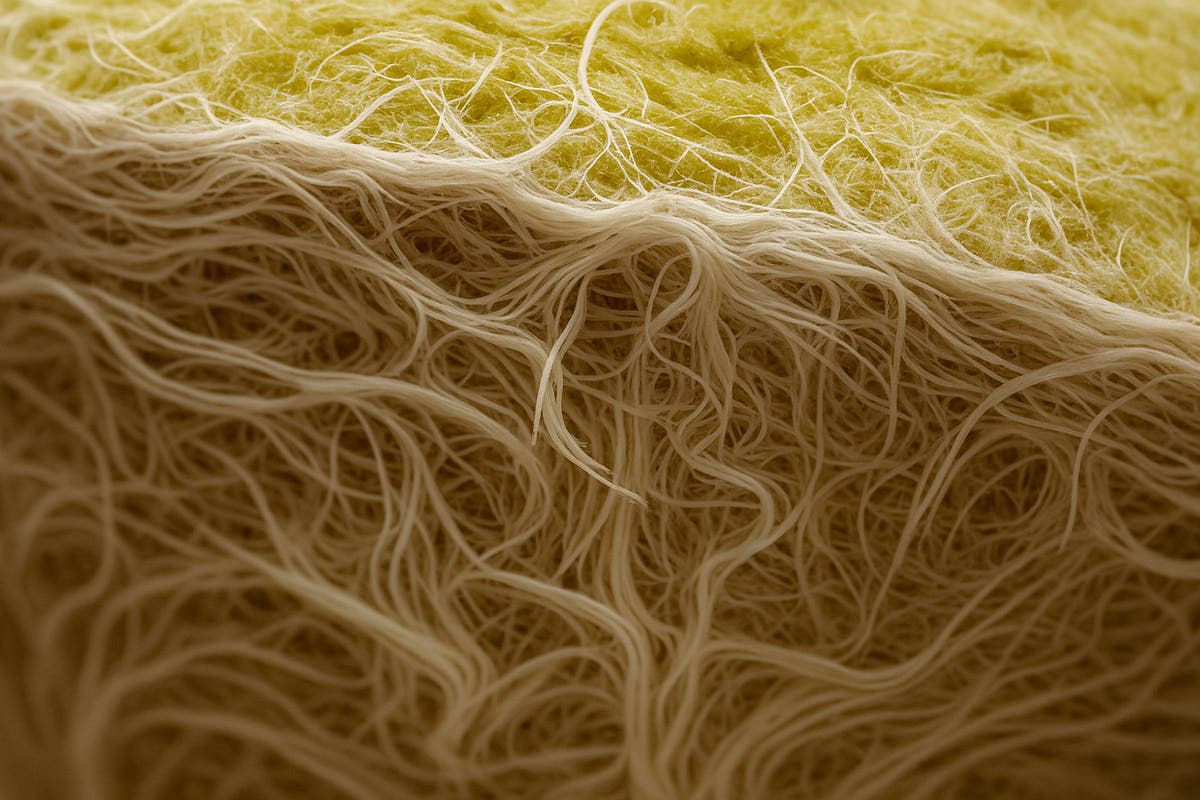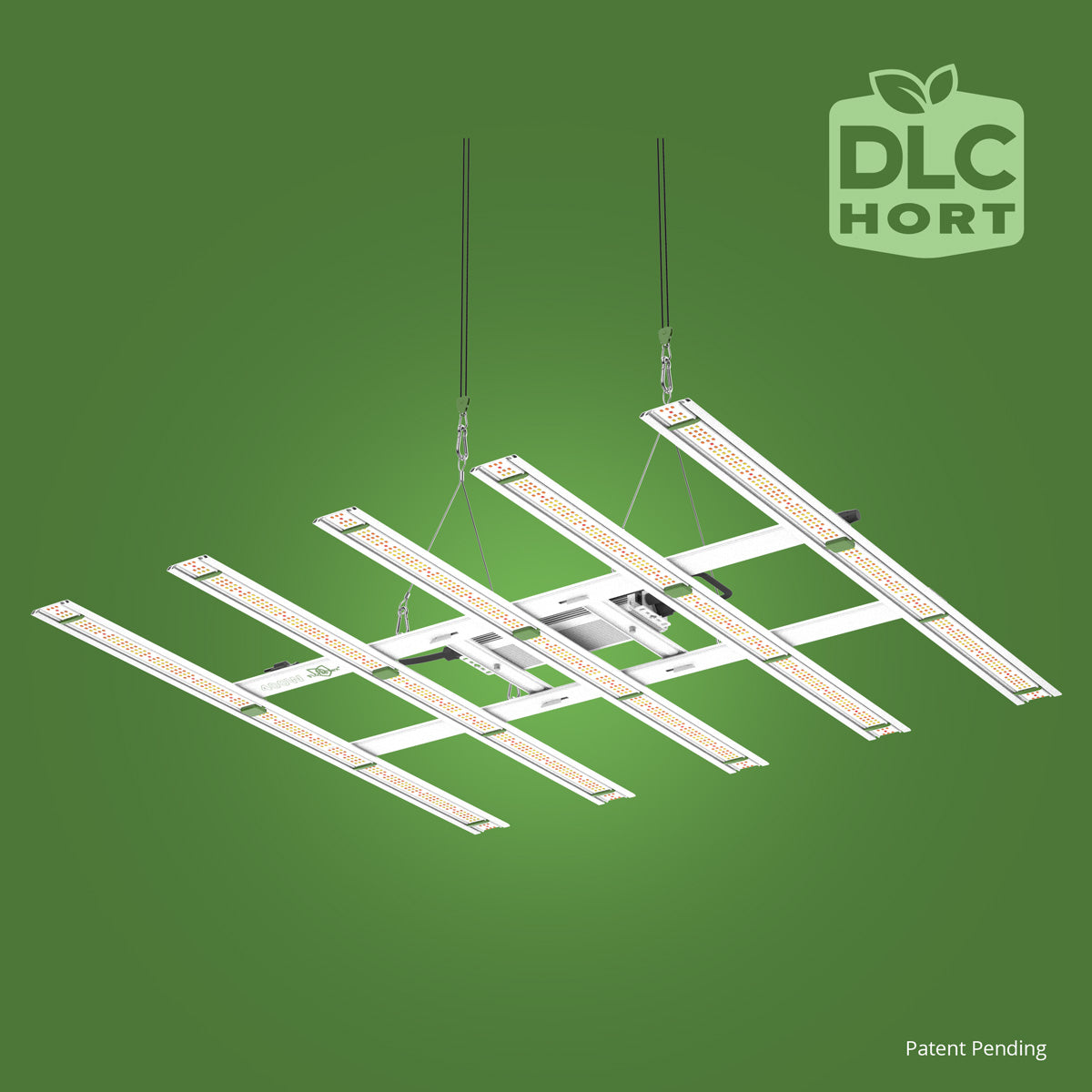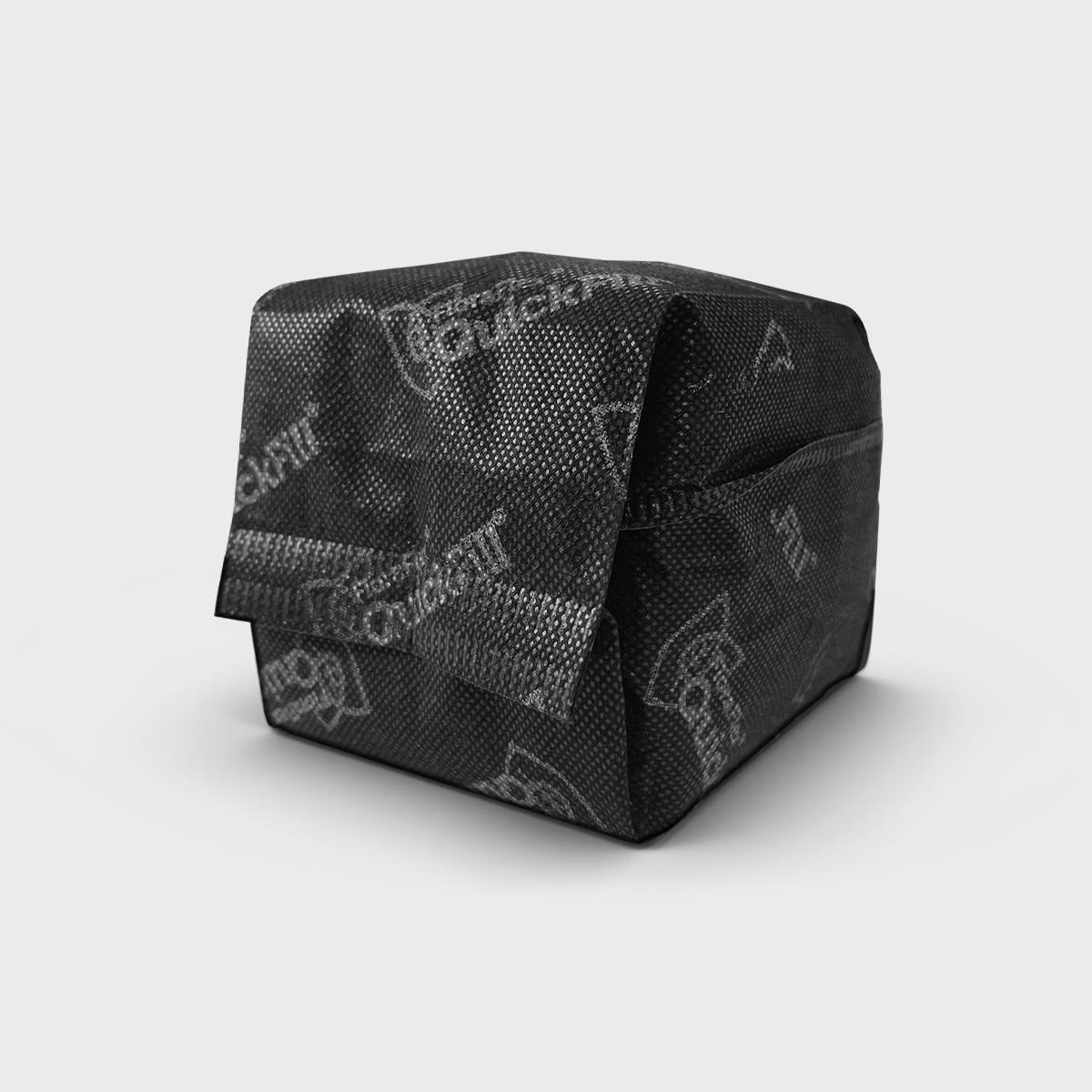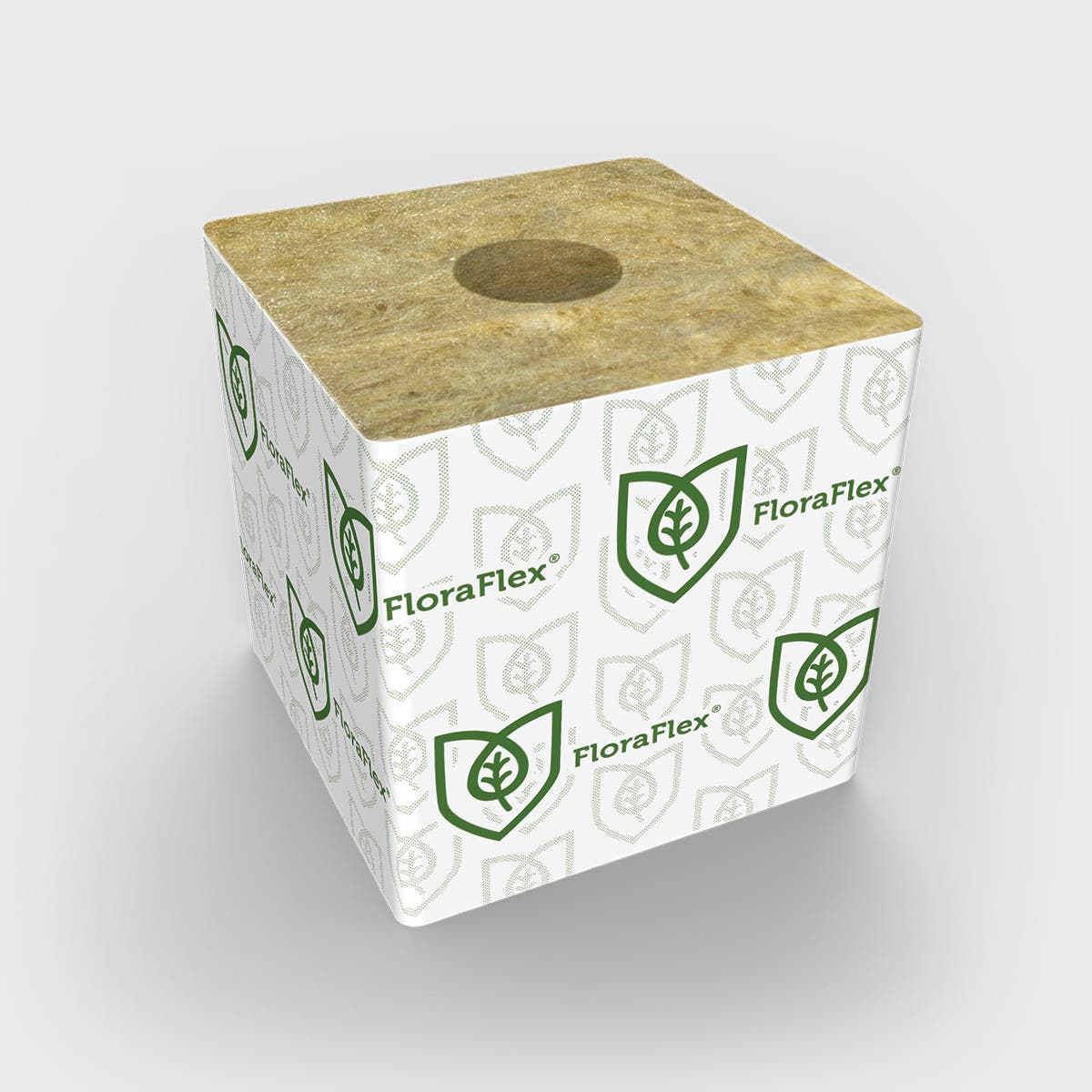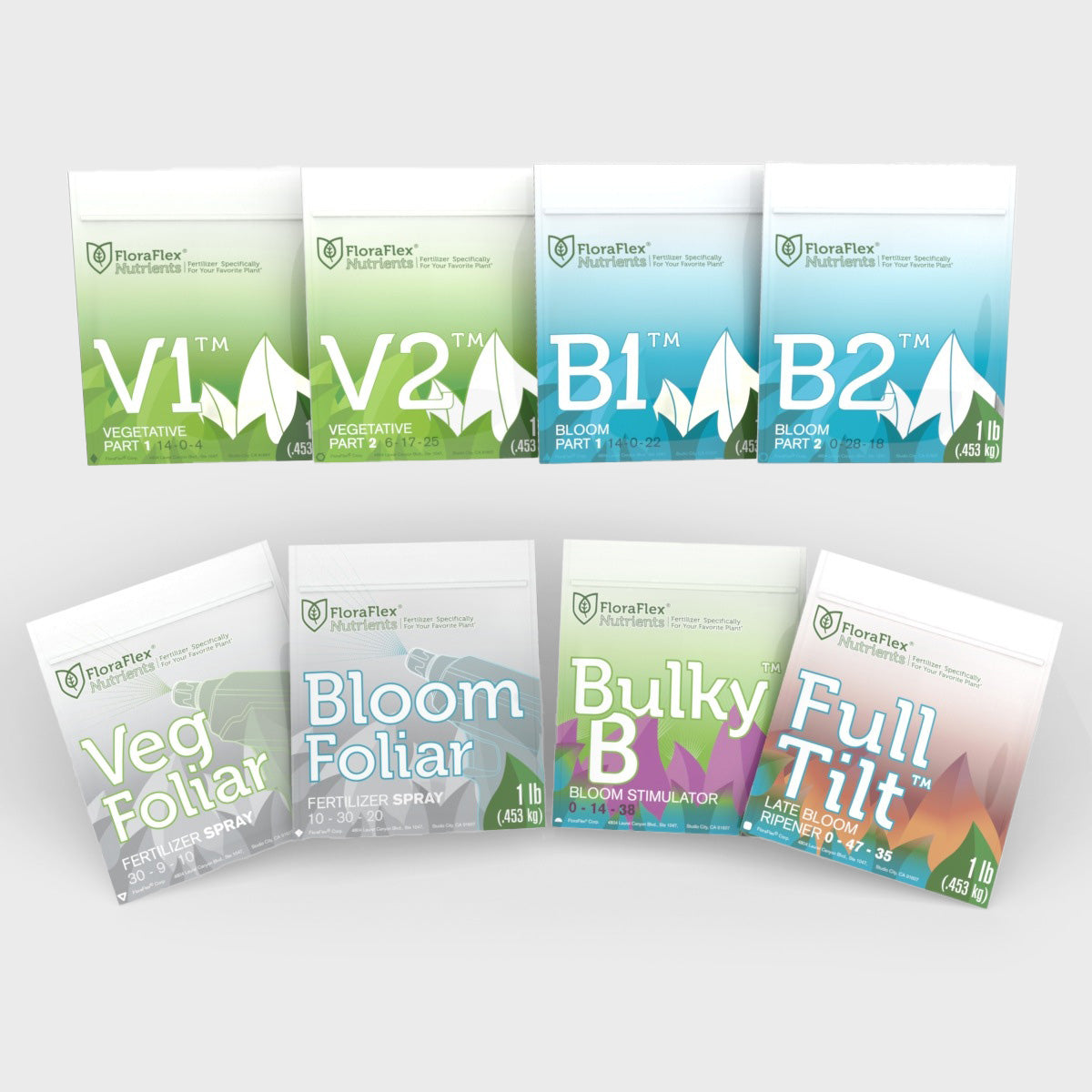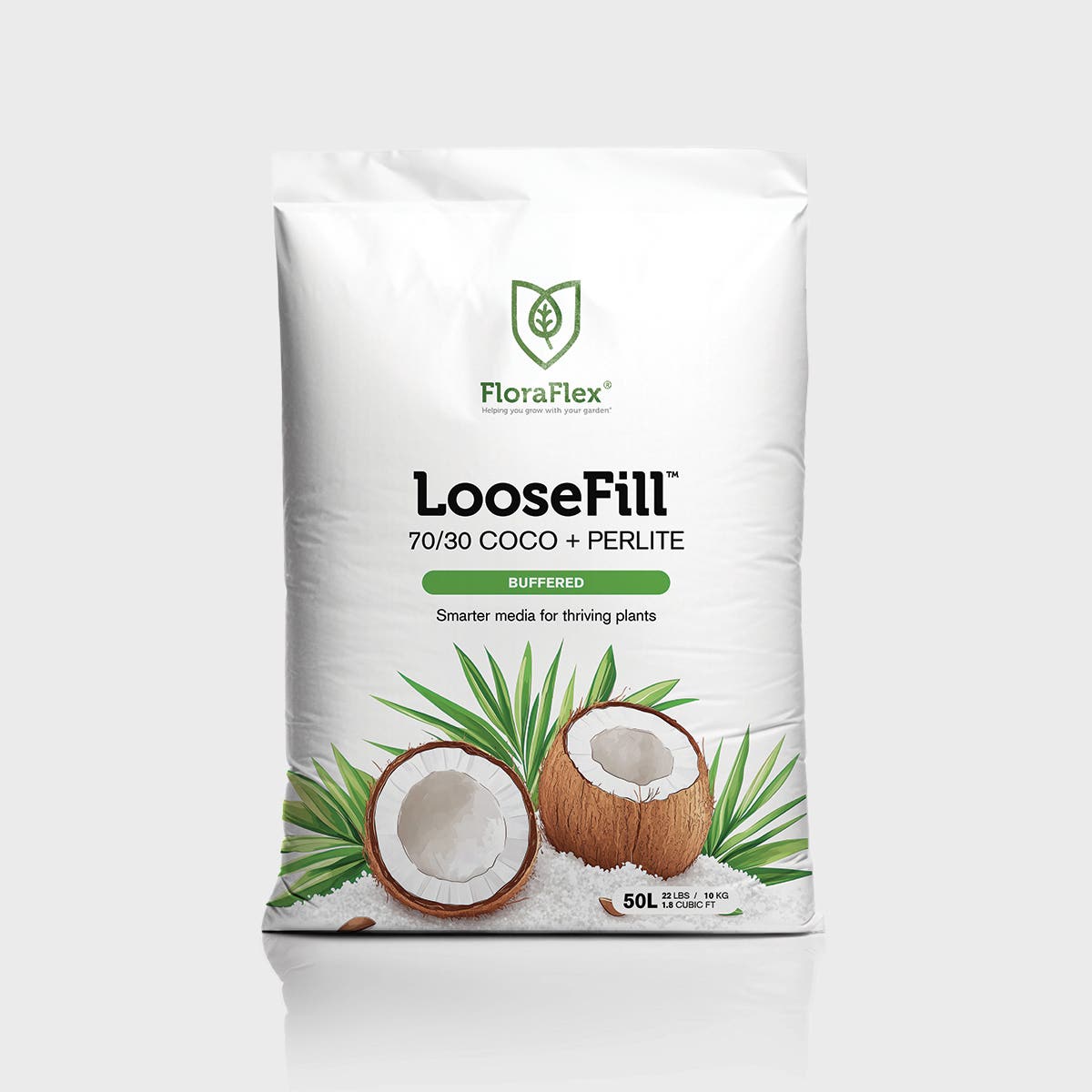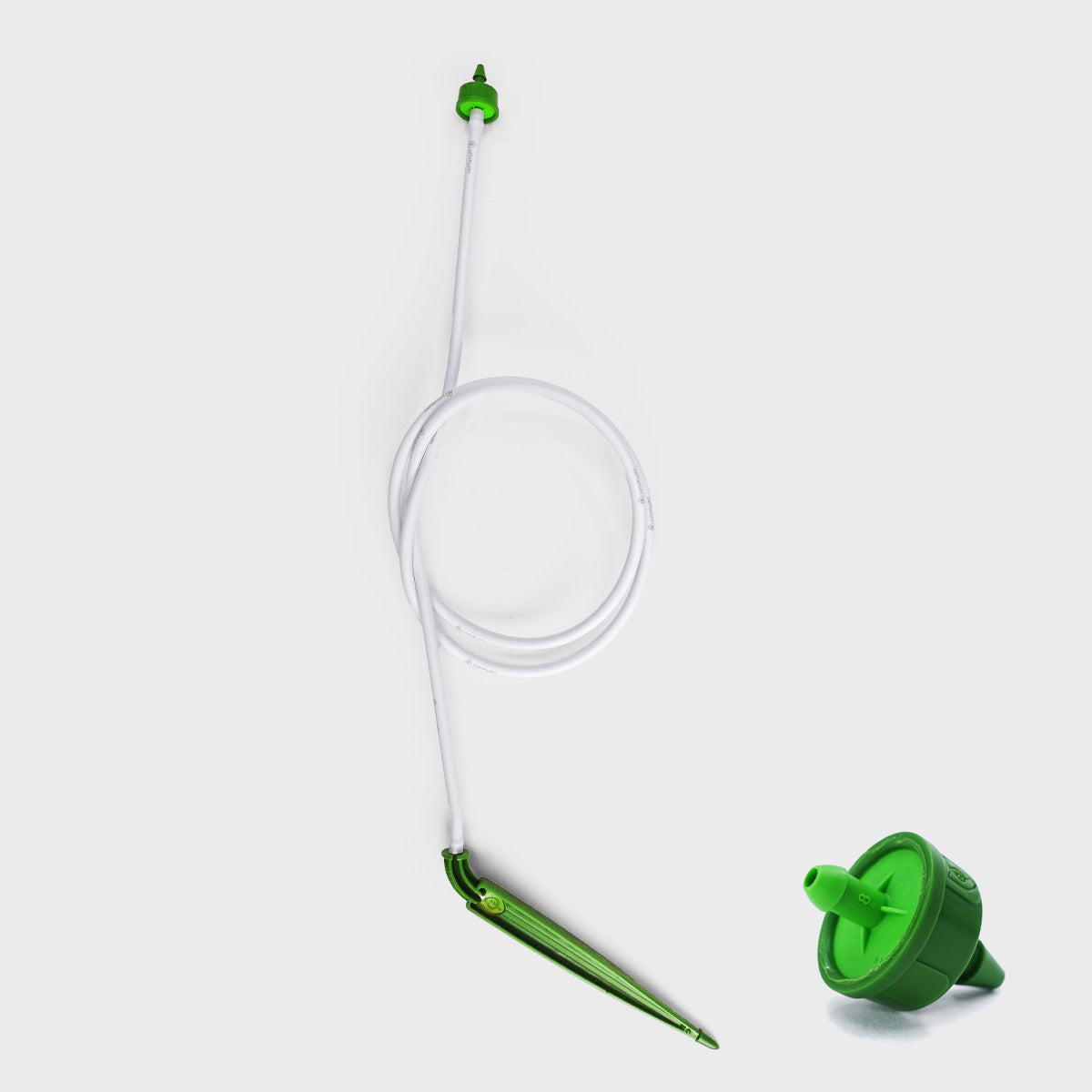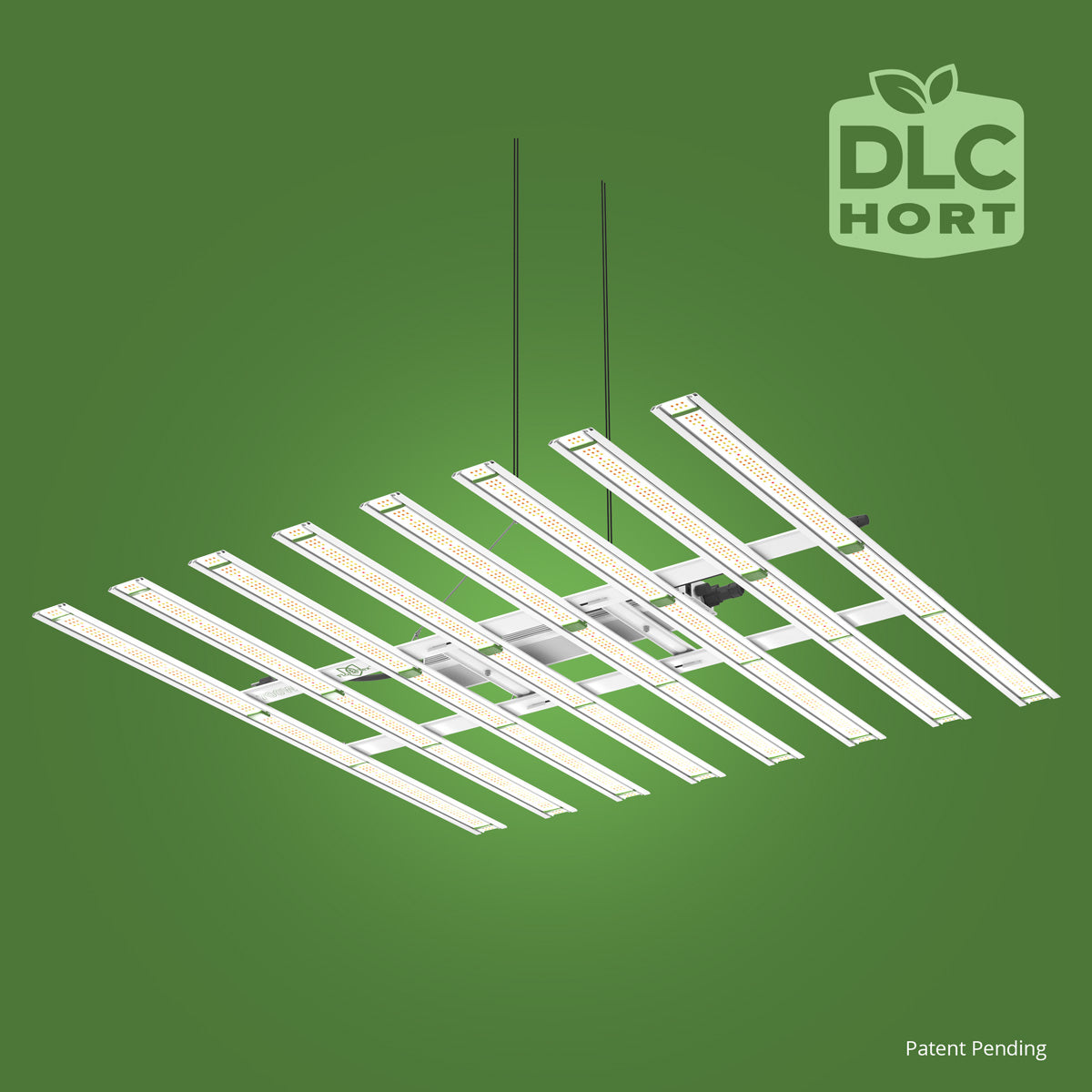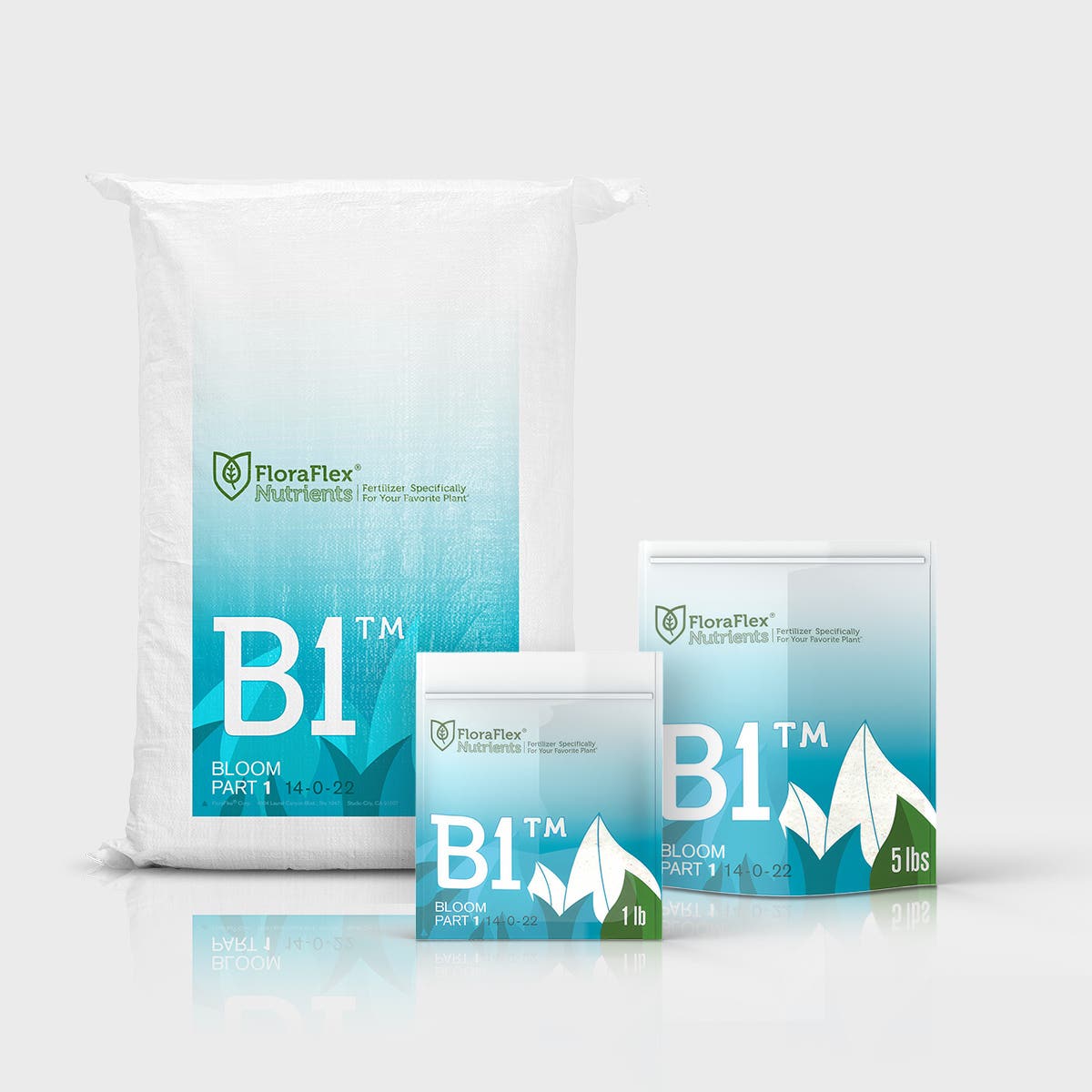In modern cannabis cultivation, the root zone has become a vital arena of innovation. It's no longer just the hidden foundation of plant health—it's the most measurable, actionable, and optimizable environment in the entire grow space. With the right tools and substrate, cultivators can now monitor and manipulate the root zone to influence yield, quality, and consistency across every crop cycle.
Enter FloraFlex Wool, a substrate built for precision, performance, and predictability. Its inert, non-degradable structure makes it the ideal platform for real-time data collection and advanced steering strategies. But it’s the way FloraFlex Wool interacts with water content (WC), electrical conductivity (EC), and modern sensor technology that sets it apart in data-driven cultivation.
By integrating root zone sensors and understanding the dynamics of irrigation timing, EC drift, and WC fluctuation, cultivators can develop repeatable strategies that steer plant development and reduce crop variability. This shift from reactive to proactive cultivation is where the future of cannabis is heading—and FloraFlex Wool makes it possible.
Understanding Root Zone Dynamics in Real Time
The root zone is a complex system where water, air, and nutrients interact with plant roots to drive growth. Every irrigation event, every dry-back, every shift in EC alters this microenvironment. With traditional substrates like soil or coco, these shifts are slow, uneven, and hard to measure. With FloraFlex Wool, they’re fast, uniform, and highly measurable.
That consistency makes FloraFlex Wool a perfect match for modern root zone sensors. Devices that track WC and ECin real time provide cultivators with a continuous stream of actionable data. When paired with a responsive substrate, that data becomes meaningful. For example, when sensors detect a drop in WC, growers can time irrigations to prevent stress. If EC spikes after multiple dry-backs, fertigation recipes or volumes can be adjusted to prevent salt accumulation.
The responsiveness of FloraFlex Wool ensures that these metrics reflect real-time conditions—not lagging averages. This real-time accuracy is critical when applying crop steering strategies. It enables growers to maintain the root zone within ideal parameters for each phase of the plant’s development.
Most importantly, it allows cultivation teams to build data-informed irrigation strategies that reduce human error and promote uniformity. Whether you’re managing a single room or an entire facility, the ability to standardize based on root zone feedback is a powerful advantage.
The Power of Data Logging and Visualization
Collecting data is only half the battle. The true transformation happens when that data is logged, analyzed, and visualized over time. Root zone monitoring with FloraFlex Wool creates clear patterns—curves that show the rhythm of each dry-back, the impact of each feed, and the long-term drift in substrate EC.
This type of visualization empowers cultivators to diagnose problems before they become visible on the plant. A flattening WC curve might suggest a clogged dripper or uneven distribution. A slow, steady rise in EC might point to salt accumulation. These trends, often invisible to the naked eye, become obvious when data is charted daily or hourly.
Growers using FloraFlex Wool benefit from the substrate’s stability across cycles. Because its structure doesn’t change, the same WC and EC behaviors repeat with each crop—allowing data from past cycles to inform future decisions. This is especially valuable when dialing in new cultivars, scaling up operations, or training new team members.
And since FloraFlex Wool is compatible with most EC/WC sensor types, cultivators can integrate it seamlessly into their preferred hardware and data dashboards. Whether you’re using standalone handheld sensors or automated logging systems, the feedback loop remains fast, clean, and reliable.
{{widget type="Magento\Cms\Block\Widget\Block" template="widget/static_block/default.phtml" block_id="799"}}
Key Indicators: Making Decisions Based on Root Zone Trends
Once you’re monitoring WC and EC with precision, what do you do with that information? In a high-performance cultivation environment, these metrics become the foundation for decision-making across irrigation, nutrition, and environmental management.
Water Content (WC) reflects the volume of water available to the plant at any given time. As a rule, cannabis prefers a moist, well-aerated root zone. But the optimal WC target shifts based on growth phase. In early vegetative stages, growers may keep WC between 60–75% of field capacity to encourage rapid root development. As flowering progresses, that target may drop closer to 50–60% to initiate generative steering. With FloraFlex Wool, dry-backs are consistent and measurable, allowing WC targets to be reached precisely.
Electrical Conductivity (EC) indicates nutrient concentration in the root zone. Cannabis tolerates a wide range of EC values, but excessive levels can restrict water uptake and reduce growth. By tracking both input EC and substrate EC, cultivators can spot trends—such as nutrient accumulation or underfeeding—and make timely corrections.
Together, WC and EC create a complete picture of the root zone’s status. Here are a few key patterns that high-performing growers look for:
-
A steady rise in EC with falling WC suggests overfeeding or insufficient runoff
-
A rapid drop in WC after lights-on indicates high transpiration and a need for earlier irrigation
-
EC spikes after a dry-back may require reduced concentration or increased irrigation volume
-
Flat WC curves signal poor saturation or blocked irrigation lines
FloraFlex Wool’s reliability ensures that these patterns aren’t just noise—they’re signals. The substrate responds to inputs in a predictable manner, so when the data changes, growers can trust that it reflects real root zone dynamics.
Building SOPs Around Sensor Feedback
Standard Operating Procedures (SOPs) are essential in commercial cannabis cultivation. They provide consistency across crops, teams, and facilities. But SOPs are only effective if they’re based on accurate, repeatable data. With FloraFlex Wool and real-time root zone monitoring, growers can design SOPs that are both precise and scalable.
For instance, instead of writing vague guidelines like “water twice a day,” SOPs can include WC thresholds that trigger irrigation events: “Begin first irrigation when WC drops below 58%. Maintain daily maximum WC under 75%.” These metrics are not only more effective—they’re teachable, trackable, and adaptable.
Using the substrate’s consistent performance, growers can create profiles for different cultivar types, environmental conditions, or facility designs. One SOP might be designed for high-EC, short-dry-back hybrid strains. Another might suit long-flower, generative-heavy cultivars with deep dry-backs. All of this is enabled by FloraFlex Wool’s predictability and its compatibility with sensor-based strategies.
More advanced facilities may even automate SOP execution. Irrigation controllers connected to WC/EC sensors can trigger fertigation events automatically, adjusting in real time to maintain ideal root zone conditions. This reduces labor requirements and ensures consistency even during staff turnover or peak production cycles.
The Future of Cannabis Cultivation Is Rooted in Data
As cannabis cultivation continues to scale, the need for predictability, reproducibility, and quality assurance grows alongside it. The old method of growing by instinct and visual inspection alone can no longer support the demands of commercial production. Data—specifically root zone data—is the key to unlocking the next evolution of cultivation.
With FloraFlex Wool as the foundation, growers gain a substrate that responds rapidly to irrigation changes, supports real-time data collection, and behaves consistently across cycles. That means fewer variables to manage and more opportunities to optimize.
More importantly, FloraFlex Wool opens the door to true closed-loop cultivation. With EC and WC data feeding into fertigation systems, environmental controls, and operational SOPs, cultivation becomes a fully responsive system. Instead of reacting to problems after they occur, growers can anticipate changes, adjust inputs, and steer plant development with precision.
The result isn’t just better yields—it’s a better business. Reduced input costs, fewer failed crops, consistent product quality, and scalable workflows all contribute to long-term success.
And in the fast-evolving world of cannabis, success belongs to the cultivators who understand that the root zone is no longer underground—it’s the center of it all.
{{widget type="FloraFlex\Blog\Block\Widget\ProductList" products_count="5" conditions_encoded="^[`1`:^[`type`:`Magento||CatalogWidget||Model||Rule||Condition||Combine`,`aggregator`:`all`,`value`:`1`,`new_child`:``^],`1--1`:^[`type`:`Magento||CatalogWidget||Model||Rule||Condition||Product`,`attribute`:`category_ids`,`operator`:`==`,`value`:`555`^]^]" template="FloraFlex_Blog::widget/productlist.phtml"}}

